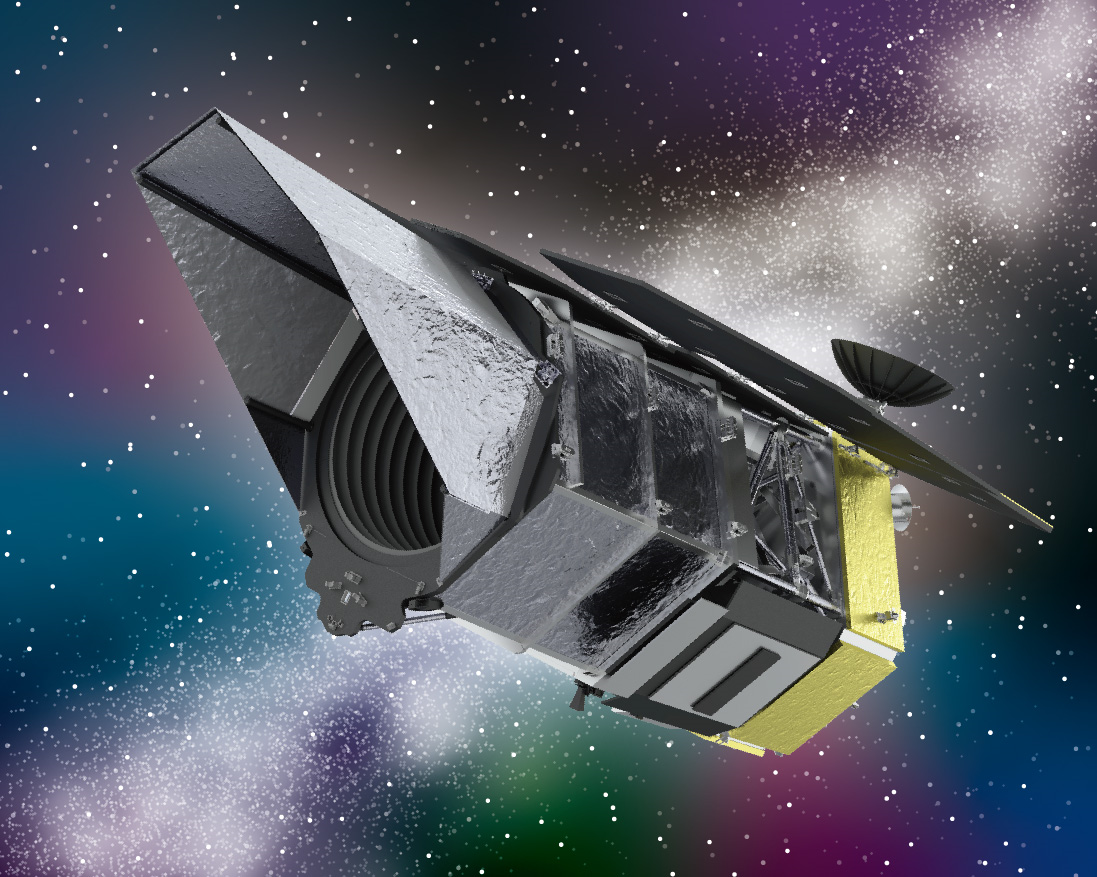

News
Topics
2024.5.23
Scientists Propose How to Find Dark Matter Structure in Milky Way’s Heart with New Eyes
In the depths of the Milky Way’s central Galactic Bulge, hidden from the naked eye, lies an abundance of mysterious dark matter. This elusive substance pervades the cosmos and holds the keys to understanding the Universe's underlying structure and evolution. Astronomers have long sought innovative methods to shed light on this enigma. Various theories suggest it can manifest as macroscopic objects, even as massive as the Earth, composed of e.g. new types of particles.
In a recent study published in Astrophysical Journal Letters, an international team comprising postdoctoral researcher William DeRocco, graduate student Nolan Smyth from the University of California at Santa Cruz (USA) as well as QUP Principal Investigator Volodymyr Takhistov in Japan, who also works at KEK Theory Center, have demonstrated how unique insights into the structure of macroscopic dark matter can be uncovered through the microlensing survey of Galactic Bulge by the upcoming NASA’s Nancy Grace Roman Space Telescope expected to launch in 2027. Extended structure has been predicted in a variety of theories, such as when dark matter is composed of macroscopic boson stars formed in the early Universe and themselves made of novel boson quantum fields.

Image: Artistic illustration of NASA’s Roman space telescope.
(©QUP/NASA)
Microlensing is a powerful discovery technique akin to a cosmic magnifying glass. When a massive object, like a star, passes between an observer and a more distant light source, its gravity bends and amplifies the light from the background source, making it appear brighter for a glimpse of time.
"Microlensing has long been known to be one of the most potent techniques for detecting dark matter structure at low masses, such as that of the Earth. We are now entering what will truly be a new era for microlensing and it’s extremely exciting to begin asking what we may discover." remarks DeRocco.
By leveraging Roman’s unprecedented sensitivity, the research team has demonstrated the ability to detect extended dark matter structures by up to four orders of magnitude beyond existing constraints.
"This is a very exciting time for anyone interested in populations of dark objects. Right now is a great opportunity to think about how to make the most of the immense amount of new data that will be collected" says Smyth.
The project initially began when DeRocco visited QUP, KEK last year through the newly established internship program QUPIP to foster international collaborations. QUP is a WPI research center based at KEK, Japan aiming to discover new quantum fields, which can also comprise dark matter, through development of a variety of “new eyes”. It is also playing a leading role in the upcoming LiteBIRD and actively participating in the observation program of the recently JAXA-launched XRISM space telescope missions that have a unique capacity to probe new physics with remarkable sensitivity using distinct approaches.
Paper details
Journal: Astrophysical Journal Letters, 965 L3 (2024)
Title: New Light on Dark Extended Lenses with the Roman Space Telescope
Authors: William DeRocco (1), Nolan Smyth (1), Volodymyr Takhistov (2,3,4,5)
Author affiliations:
1 Santa Cruz Institute for Particle Physics, University of California, Santa Cruz, CA 95062, USA
2 Theory Center, Institute of Particle and Nuclear Studies, High Energy Accelerator Research Organization (KEK), Tsukuba 305-0801, Japan
3 International Center for Quantum-field Measurement Systems for Studies of the Universe and Particles (QUP), KEK, 1-1 Oho, Tsukuba, Ibaraki 305-0801, Japan
4 Graduate University for Advanced Studies (SOKENDAI), 1-1 Oho, Tsukuba, Ibaraki 305-0801, Japan
5 Kavli Institute for the Physics and Mathematics of the Universe (WPI), Chiba 277-8583, Japan
Media contact
QUP Strategy Office
Email: qup_pr-at-kek.jp
* Please change _at_ to @
